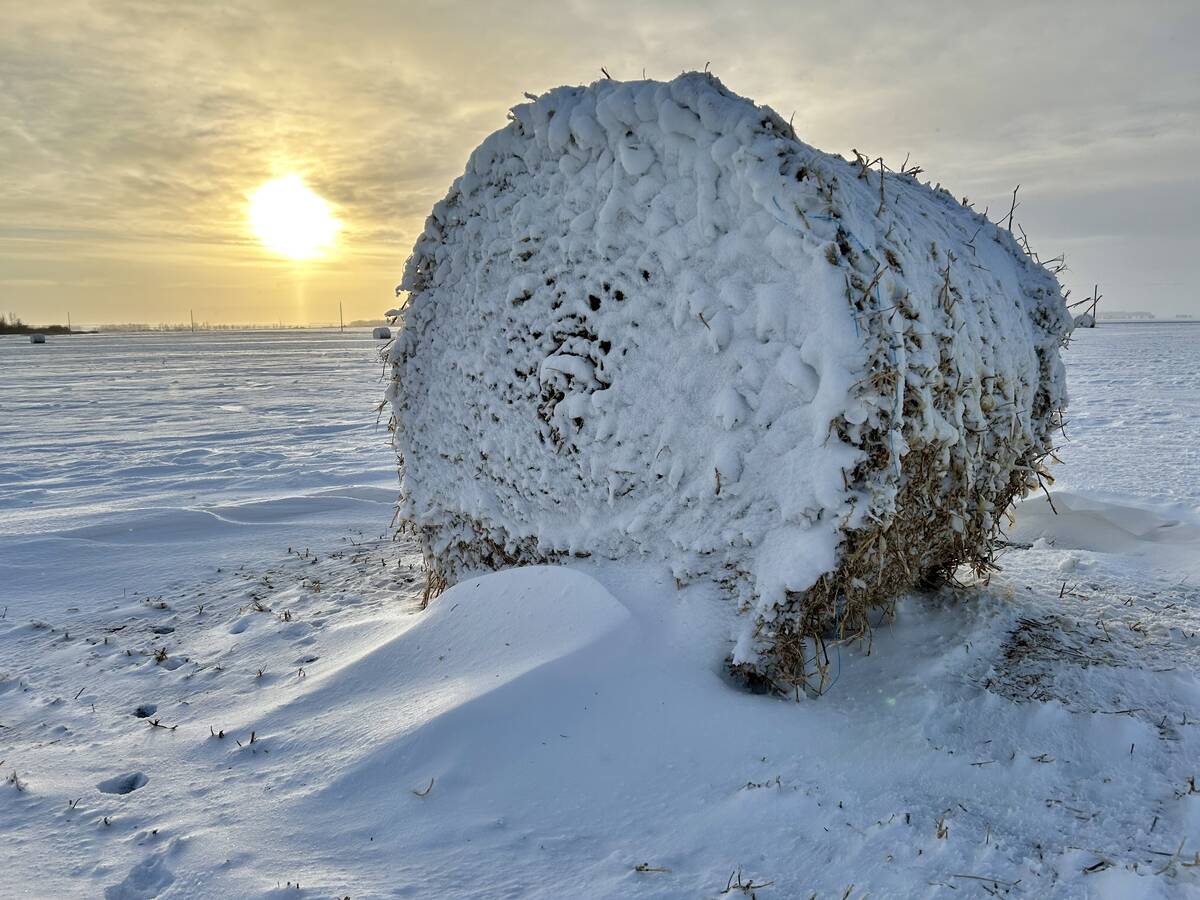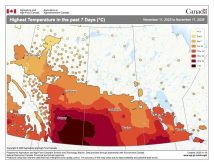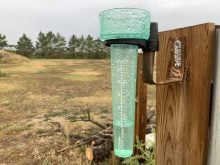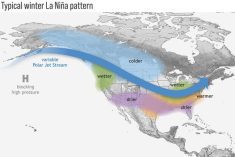Daniel Bezte has a special interest in farm weather, which he follows from a small farm near Winnipeg, where he has his own computerized weather station. He has been a regular contributor to other farm publications including the Farmers’ Independent Weekly and the Manitoba Co-operator. Daniel has a degree in geography, specializing in climatology, from the University of Winnipeg.
He welcomes questions and comments at [email protected]
In our last Arctic sea ice article we discussed how increasing the amount of open water in the Arctic can create a positive feedback loop that may help to increase the rate of ice melt. We also discussed how satellites are being used to create fairly accurate records of sea ice coverage and how this record has shown a fairly dramatic decrease in the amount of Arctic sea ice, especially in the summer months.
Read Also

Prairie winter snowfall forecast 2025-2026
How much snow should farmers in Alberta and elsewhere on the Canadian Prairies expect for the rest of December 2025 and into January-February 2026?
I had several emails about the March and September ice coverage graphs from my last article. Every one pointed out that the graphs showed an increase in ice cover over the last three years and wouldn’t that increase indicate that the downward trend is over?
The answer to that is, possibly, but I really doubt it. A three-year increase does not really make a trend. If you go back and look at the graphs you would see that ice coverage increases for a couple of years, then decreases for a couple. This increase and decrease goes back and forth. What you need to look at is the longer-term trend.
Take September’s values as an example. In 2007 we saw a record-low amount of sea ice. This record low was due to a nearly perfect coming together of weather conditions over the Arctic which created conditions ideal for ice melt. So it is no wonder that the next couple of years showed an increase in ice coverage. If you actually look at the amount of September ice coverage in 2008 and 2009 you would find that while it was up from 2007, it was still lower than any other year on record.
Some readers also pointed out to me that the satellite records are not as reliable as they are made up to be and that we really shouldn’t trust them. I also have to agree, at least a little bit. Remote sensing is not an exact science. Satellites record various areas of the electromagnetic spectrum, and using math, turn that information into an estimate of surface conditions. Satellites can go wonky and record bad information and the math can be off. Fortunately, a lot of work is put into the data collected from satellites looking for possible errors and then correcting those errors.
ERRORS GO BOTH WAYS
While satellite records can give false data at times, for some reason people seem to always think that these errors will be on the side of showing less ice cover. I guess it is all the global warming conspiracy theories out there, or maybe people just don’t want to believe what is happening.
Last summer researchers when up to the Arctic to check out the ice conditions first hand, and using maps produced but satellite images they went looking for thick multi-year ice. What they found was rather disturbing. Where the satellites were recording thick multi-year ice, the researchers found rotten multi-year ice, on the verge of breaking apart and disintegrating. So it looks as if the satellites are overestimating the amount of thick multi-year ice in the Arctic. This could lead to even larger declines in summer sea ice in the upcoming year.
What effect could this decrease in Arctic sea ice have on our weather? Well, the simple answer is that we just don’t really know. When the climate system is disrupted on a large scale it tends to search for a new stable state. What this means is that while Arctic ice was stable, the Arctic weather patterns were rather stable. As the ice melt increases, Arctic weather becomes increasingly unstable. New weather patterns emerge and these patterns influence the weather in other regions. Remember, our weather is strongly controlled by what goes on in the Arctic.
Already we have seen a new pressure pattern emerge in the Arctic over the last few years, known as the Arctic Rapid Change Pattern, or Arctic Dipole. This pattern brings milder weather into the Arctic and displaces the colder air farther south. Interestingly, this new pressure pattern is helping to reinforce the positive feedback loop that causes even more sea ice loss. This feedback loop increases the likelihood that an ice-free Arctic in the summer will be seen by 2030, as many Arctic experts are predicting.
It’s worth noting that such an atmospheric circulation shift was not predicted by the climate models. Indeed, the loss of Arctic sea ice over the past three years exceeds what any of the models were predicting.
In the next issue we will conclude out look at the Arctic sea ice and how its decline is affecting not only the Arctic weather but weather around the globe.














